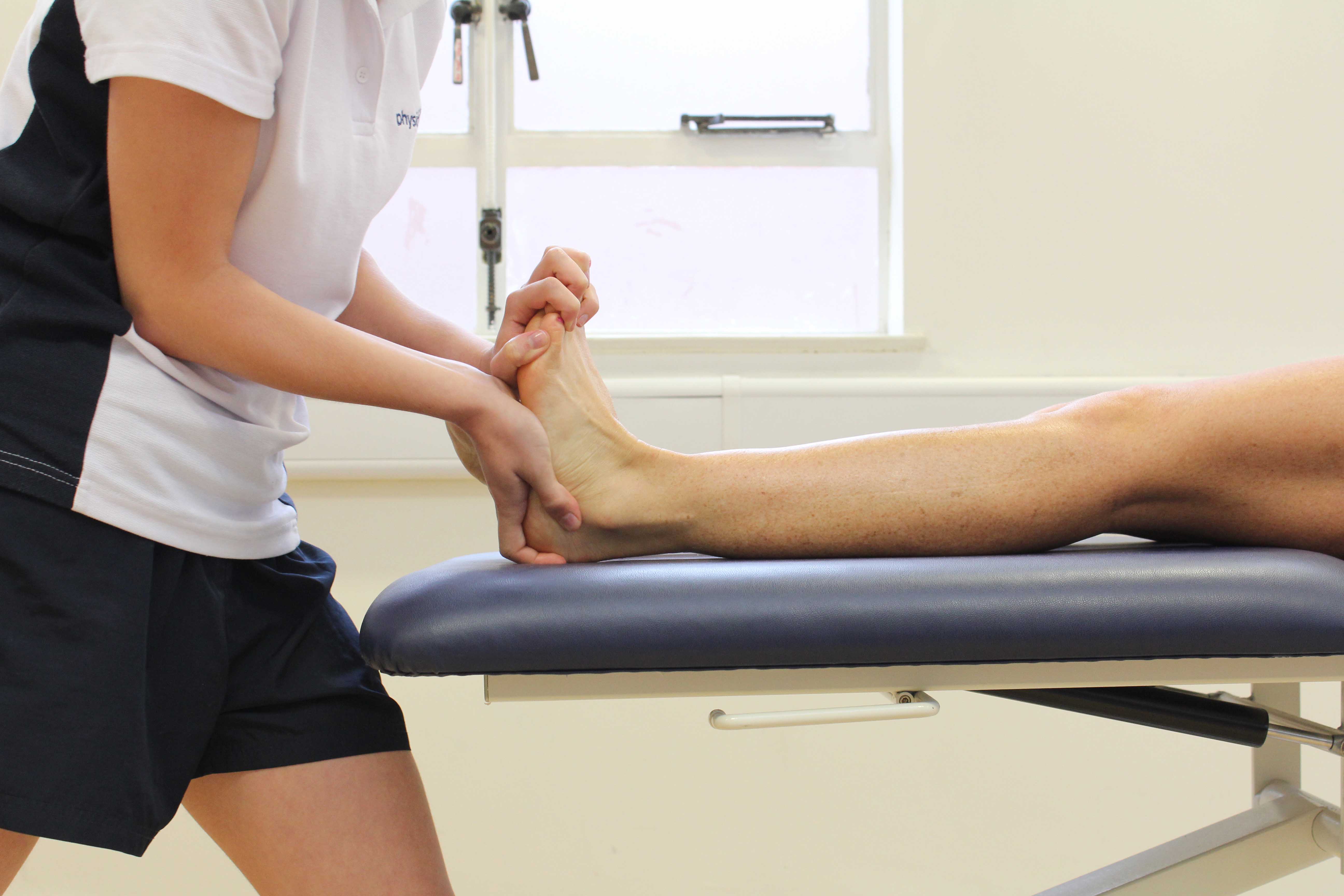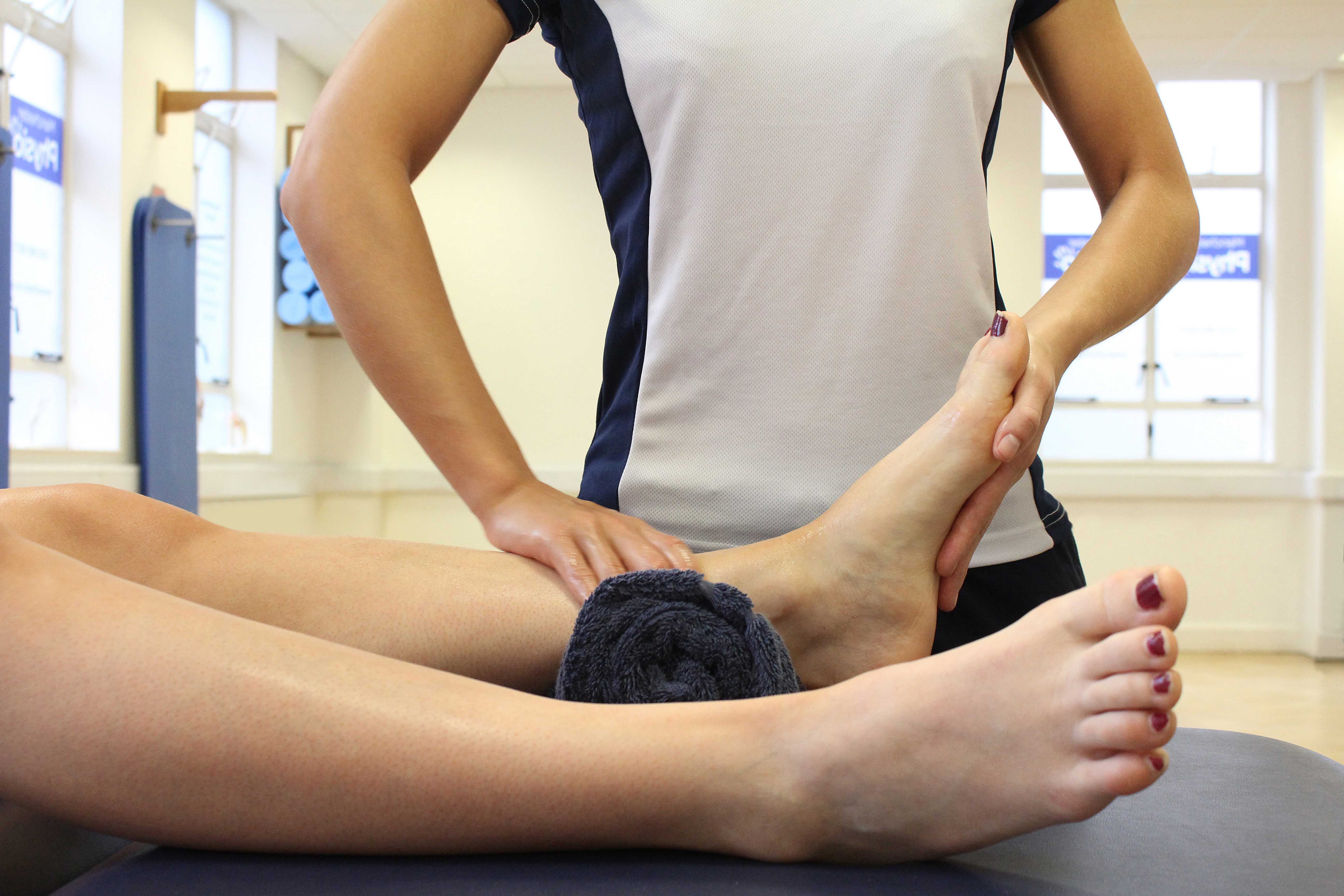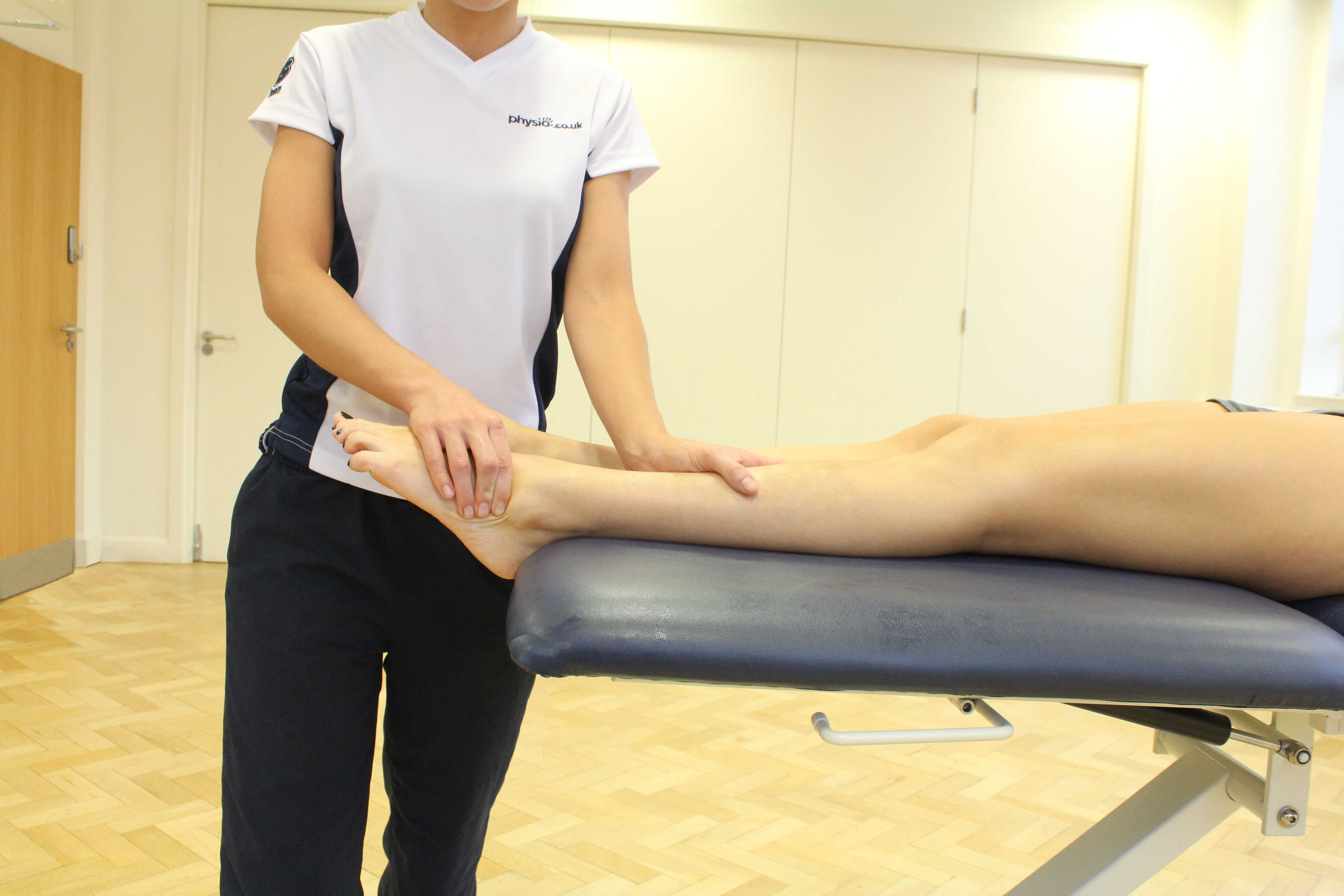- Talocrural joint- this is what we refer to as the ankle joint where the shin bone (tibia) meets the wedge shaped bone on the front of the foot (talus).
- Inferior tibiofibular joint- where the small lower leg bone (fibula) meets the shin bone.
- Subtalar joint- where the heel bone (calcaneus) joins with the talus bone.
 Above: Passive stretch of connective soft tissues in the ankle
Above: Passive stretch of connective soft tissues in the ankleThe ankle joint is a common place that is affected by arthritis. Often this is managed by exercises, medication, walking aids (sticks, frames) or other treatment methods. However, if the pain is too severe or your arthritis is preventing you from doing your day to day activities you may need to have an ankle fusion to correct the problem.
Other reasons for having an ankle fusion other than arthritis include:
- A tumour or malignancy in the ankle region
- A severe ankle fracture
- Trauma to the ankle joint
- Progressive disease in the ankle
 Above: Passive stretch of connective soft tissues in the ankle
Above: Passive stretch of connective soft tissues in the anklePhysiotherapy prior to ankle fusion
Ankle fusion surgery will be elective (planned) and therefore it is important that beforehand you are as prepared as you can be. The physiotherapists at Physio.co.uk can create a personalised exercise programme for you before your surgery to help maintain your strength, flexibility and function in other joints. This will give you the best chance of recovery following the surgery and help you to regain your independence as soon as possible.
Your rehabilitation programme at Physio.co.uk may include the following treatments:
- Maintaining/ increasing range of movement in your affected and surrounding joints
- Maintaining/ increasing strength
- Gentle mobilisations of the joints in the affected area
- Advice on walking pattern which will help you after the surgery
- Maintaining strength and flexibility of the upper limb
- Cryotherapy (ice) treatment if the joint is swollen
- Planning of your rehabilitation after surgery
 Above: Passive stretch of connective soft tissues in the ankle
Above: Passive stretch of connective soft tissues in the ankleSymptoms after ankle fusion
The ankle fusion aims to reduce your pain levels by fixing the arthritic joint together. However, because of this you will have less movement in the joint which may initially be difficult to get used to. The following symptoms may be experienced:
- Reduced pain due to the removal of arthritic surfaces
- A rigid ankle joint with a reduction of normal movement
- Differences in driving and walking on inclines and stairs as the ankle movement is now limited. Movements involving pointing the toes down and pulling the toes up will be restricted after surgery.
- Swelling of the foot and ankle immediately after the surgery. You will need to elevate the leg and work with your physiotherapist at Physio.co.uk to complete elevation exercises which will help the swelling go down. This will also minimise the chances of infection from the surgery.
- You may experience temporary numbness or pins and needles around the foot and ankle surfaces. This is because the nerves supplying these areas may have been damaged during the surgery and will take a while to grow back. Your physiotherapists will tell you of things that you can do to help regain this sensation.
Physiotherapy after ankle fusion
Weeks 1-6
Following the surgery your leg will be placed in a half plaster for two weeks. You will not be able to weight bear (walk or put any weight though the joint) for six weeks. After two weeks, you will be placed in a different plaster which will keep the joint immobilised for another month.
At this stage, the physiotherapists at Physio.co.uk will concentrate on:
- Reducing the swelling with Cryotherapy treatment
- Maintaining range of movement and strength in the surrounding joints
Weeks 6-12
After six weeks, your surgeon will X-ray the ankle to check if the bone has grown over the joint. You will then be given a weight bearing plaster for six weeks. At this stage you are allowed to put weight through the joint and begin to gradually build up your walking distances. Physiotherapy will now include:
- Re-educating your walking pattern with your new ankle joint
- Gentle mobilisations around the ankle joint to increase movement
- Continuing cryotherapy treatment if swelling is still apparent
- Gradual cardiovascular activity including static bike and treadmill walking
- Retraining balance and proprioception (joint awareness)
Following 12 weeks
After three months, you will have a final review and x-ray to check the progress of the surgery. If the ankle joint is healing well then your plaster will be removed and you will be able to return gradually to your normal activities. Physiotherapy will now concentrate on:
- Increasing cardiovascular levels
- Hydrotherapy
- Dynamic balance and proprioception exercises
- Progression of muscle strength and range of movement exercises
- Progressing joint mobilisations to improve range of movement
- Continuing walking retraining on more unpredictable surfaces e.g. outside, stairs, hills
- Adding more functional activities and exercises
- Returning to your normal independence levels
Summary
Ankle fusion involves removing the arthritic joint surfaces and fusing the joint together with metal screws to form a rigid structure. Ankle fusion is a very successful surgical procedure and many people suffering from arthritis find it to relieve the majority of their pain. However, without the appropriate advice and rehabilitation programme, you may find it difficult to adjust to the changes within the foot and ankle. The physiotherapists at Physio.co.uk will work with you before and after the surgery to help ensure the rehabilitation outcome is successful as possible and you are able to return to your previous independence as soon as possible.
Call 0330 088 7800 to arrange an appointment with one of our experienced physiotherapists today!

 0330 088 7800
0330 088 7800


































